Related Research Articles

Op. 70 is a set of two Piano Trios by Ludwig van Beethoven, written for piano, violin, and cello. Both trios were composed during Beethoven's stay at Countess Marie von Erdödy's estate, and both are dedicated to her for her hospitality. They were published in 1809.
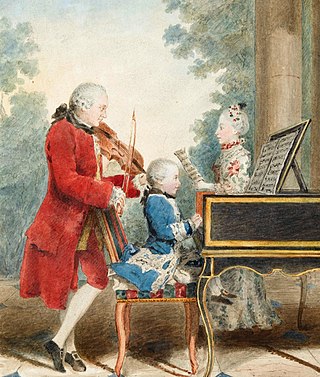
The Classical period was an era of classical music between roughly 1750 and 1820.
Sonata form is a musical structure generally consisting of three main sections: an exposition, a development, and a recapitulation. It has been used widely since the middle of the 18th century.
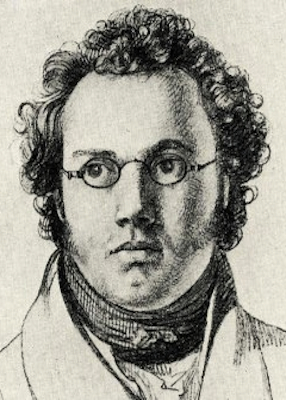
The Trout Quintet (Forellenquintett) is the popular name for the Piano Quintet in A major, D. 667, by Franz Schubert. The piano quintet was composed in 1819, when he was 22 years old; it was not published, however, until 1829, a year after his death.

Ludwig van Beethoven's Piano Sonata No. 29 in B♭ major, Op. 106 is a piano sonata that is widely viewed as one of the most important works of the composer's third period and among the greatest piano sonatas of all time. Completed in 1818, it is often considered to be Beethoven's most technically challenging piano composition and one of the most demanding solo works in the classical piano repertoire. The first documented public performance was in 1836 by Franz Liszt in the Salle Erard in Paris to an enthusiastic review by Hector Berlioz.

The String Quartet No. 6 in B-flat major, Op. 18, No. 6, was written between 1798 and 1800 by Ludwig van Beethoven and published in 1801, and dedicated to Joseph Franz von Lobkowitz.

Ludwig van Beethoven's String Quartet No. 11 in F minor, Op. 95, from 1810, was his last before his late string quartets. It is commonly referred to as the "Serioso," stemming from his title "Quartett[o] Serioso" at the beginning and the tempo designation for the third movement.

Beethoven's Piano Sonata No. 21 in C major, Op. 53, known as the Waldstein, is one of the three most notable sonatas of his middle period. Completed in summer 1804 and surpassing Beethoven's previous piano sonatas in its scope, the Waldstein is a key early work of Beethoven's "Heroic" decade (1803–1812) and set a standard for piano composition in the grand manner.
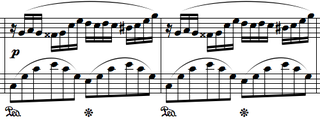
Frédéric Chopin's Fantaisie-Impromptu in C♯ minor, Op. posth. 66, WN 46 is a solo piano composition. It was composed in 1834 and published posthumously in 1855 despite Chopin's instruction that none of his unpublished manuscripts be published. The Fantaisie-Impromptu is one of Chopin's most frequently performed and popular compositions.
D-flat major is a major scale based on D♭, consisting of the pitches D♭, E♭, F, G♭, A♭, B♭ and C. Its key signature has five flats.
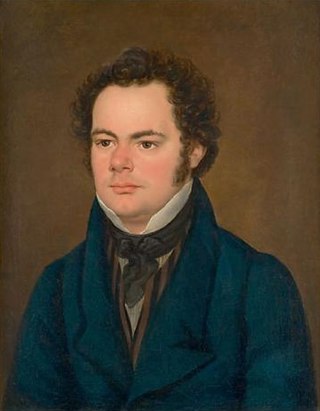
Franz Schubert's final chamber work, the String Quintet in C major is sometimes called the "Cello Quintet" because it is scored for a standard string quartet plus an extra cello instead of the extra viola which is more usual in conventional string quintets. It was composed in 1828 and completed just two months before the composer's death. The first public performance of the piece did not occur until 1850, and publication occurred three years later in 1853. Schubert's only full-fledged string quintet, it has been praised as "sublime" or "extraordinary" and as possessing "bottomless pathos," and is generally regarded as Schubert's finest chamber work as well as one of the greatest compositions in all chamber music.

The String Quartet No. 13 in A minor, D 804, Op. 29, was written by Franz Schubert between February and March 1824. It dates roughly to the same time as his monumental Death and the Maiden Quartet, emerging around three years after his previous attempt to write for the string quartet genre, the Quartettsatz, D 703, that he never finished.

The Piano Sonata No. 17 in D minor, Op. 31, No. 2, was composed in 1801–02 by Ludwig van Beethoven. The British music scholar Donald Francis Tovey says in A Companion to Beethoven's Pianoforte Sonatas:
"With all the tragic power of its first movement the D minor Sonata is, like Prospero, almost as far beyond tragedy as it is beyond mere foul weather. It will do you no harm to think of Miranda at bars 31–38 of the slow movement... but people who want to identify Ariel and Caliban and the castaways, good and villainous, may as well confine their attention to the exploits of Scarlet Pimpernel when the Eroica or the C minor Symphony is being played."

Ludwig van Beethoven's Piano Sonata No. 1 in F minor, Op. 2 No. 1, was written in 1795 and dedicated to Joseph Haydn. It was published simultaneously with his second and third piano sonatas in 1796.
Beethoven's Piano Sonata No. 11 in B♭ major, Op. 22, was composed in 1800, and published two years later. Beethoven regarded it as the best of his early sonatas, though some of its companions in the cycle have been at least as popular with the public.
The Quintet in E♭ major for Piano and Winds, K. 452, was composed by Wolfgang Amadeus Mozart on March 30, 1784 and premiered two days later at the Imperial and Royal National Court Theater in Vienna. Shortly after the premiere, Mozart wrote to his father that "I myself consider it to be the best thing I have written in my life." It is scored for piano, oboe, clarinet, horn and bassoon.
Franz Schubert's Piano Sonata in D major D. 850, Op. 53, known as the Gasteiner, was written during August 1825 whilst the composer was staying in the spa town of Bad Gastein. A year later, it became only the second of his piano sonatas to be published.
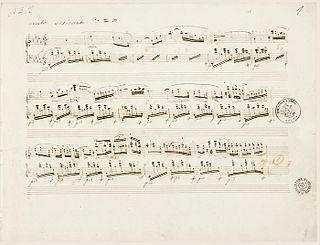
The Nocturnes, Op. 27 are a set of two nocturnes for solo piano composed by Frédéric Chopin. The pieces were composed in 1836 and published in 1837. Both nocturnes in this opus are dedicated to Countess d'Appony.

Franz Schubert's last three piano sonatas, D 958, 959 and 960, are his last major compositions for solo piano. They were written during the last months of his life, between the spring and autumn of 1828, but were not published until about ten years after his death, in 1838–39. Like the rest of Schubert's piano sonatas, they were mostly neglected in the 19th century. By the late 20th century, however, public and critical opinion had changed, and these sonatas are now considered among the most important of the composer's mature masterpieces. They are part of the core piano repertoire, appearing regularly on concert programs and recordings.
Johannes Brahms' String Quartet No. 1 in C minor and String Quartet No. 2 in A minor were completed in Tutzing, Bavaria, during the summer of 1873, and published together that autumn as Op. 51. They are dedicated to his friend Theodor Billroth. He only published one other string quartet, No. 3 in B-flat Major, in 1876.
References
- ↑ Mark Ardus, CD liner notes, Andras Schiff plays Schubert Impromptus and Moments Musicaux, DECCA
- ↑ "Schubert - Allegretto in C minor D 915". E-Music Maestro.
- 1 2 3 Blair Johnson, in The All Music Guide to Classical Music (Backbeat Books), p. 1198
- 1 2 3 Blair Johnson, in The All Music Guide to Classical Music (Backbeat Books), p. 1199
- ↑ Classic Melbourne: The Schubert Cycle, Part II/
- ↑ "Allegretto in C minor, D915 (Schubert) - from SIGCD837 - Hyperion Records - MP3 and Lossless downloads". www.hyperion-records.co.uk.